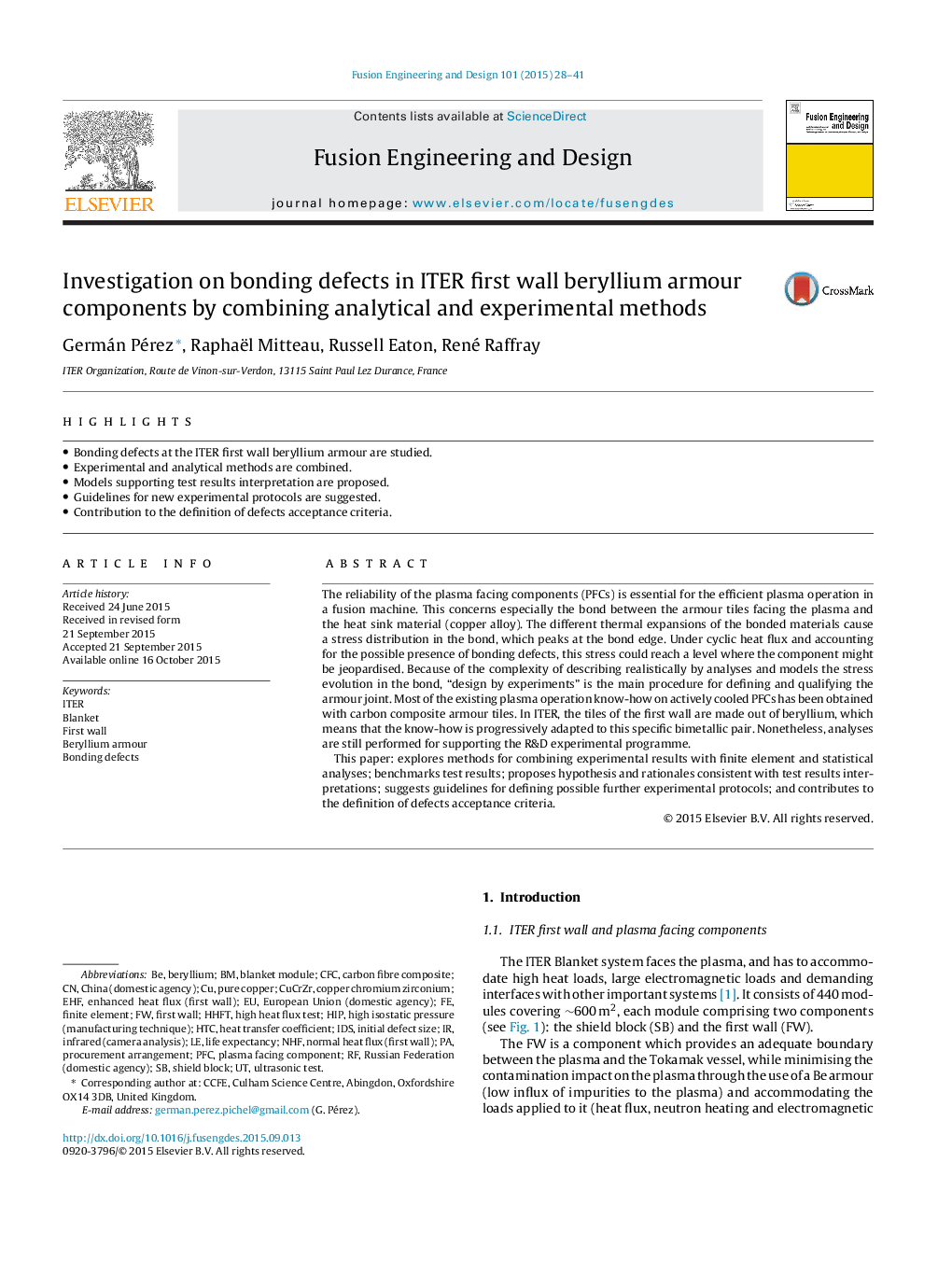| Article ID | Journal | Published Year | Pages | File Type |
|---|---|---|---|---|
| 270919 | Fusion Engineering and Design | 2015 | 14 Pages |
•Bonding defects at the ITER first wall beryllium armour are studied.•Experimental and analytical methods are combined.•Models supporting test results interpretation are proposed.•Guidelines for new experimental protocols are suggested.•Contribution to the definition of defects acceptance criteria.
The reliability of the plasma facing components (PFCs) is essential for the efficient plasma operation in a fusion machine. This concerns especially the bond between the armour tiles facing the plasma and the heat sink material (copper alloy). The different thermal expansions of the bonded materials cause a stress distribution in the bond, which peaks at the bond edge. Under cyclic heat flux and accounting for the possible presence of bonding defects, this stress could reach a level where the component might be jeopardised. Because of the complexity of describing realistically by analyses and models the stress evolution in the bond, “design by experiments” is the main procedure for defining and qualifying the armour joint. Most of the existing plasma operation know-how on actively cooled PFCs has been obtained with carbon composite armour tiles. In ITER, the tiles of the first wall are made out of beryllium, which means that the know-how is progressively adapted to this specific bimetallic pair. Nonetheless, analyses are still performed for supporting the R&D experimental programme.This paper: explores methods for combining experimental results with finite element and statistical analyses; benchmarks test results; proposes hypothesis and rationales consistent with test results interpretations; suggests guidelines for defining possible further experimental protocols; and contributes to the definition of defects acceptance criteria.
